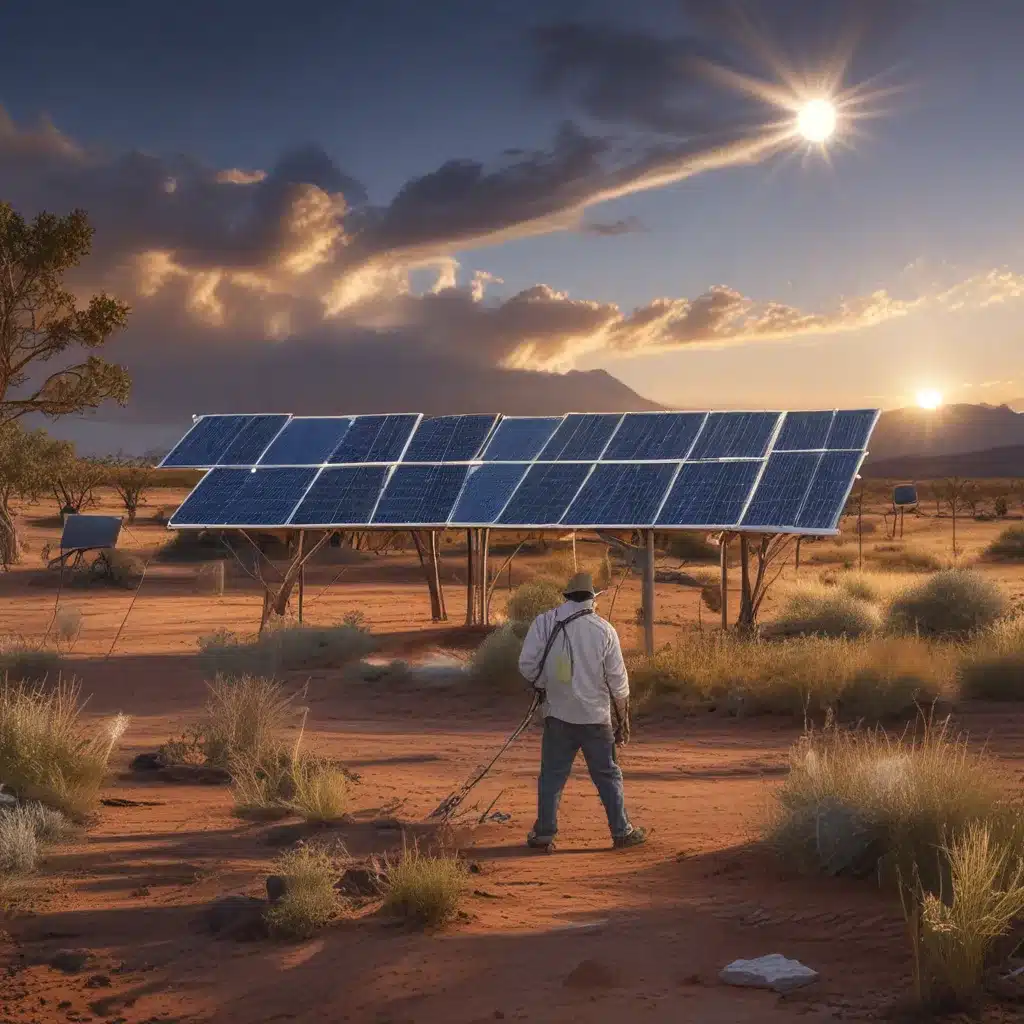
The Untapped Potential of Solar Power
I’ll never forget the first time I visited a remote village in the heart of the Amazon rainforest. As our small plane touched down on the dirt runway, I was immediately struck by the stark contrast between the lush, verdant landscape and the stark absence of modern infrastructure. No power lines, no gas stations, not even a street lamp in sight. It was like stepping back in time, a world entirely disconnected from the technological advancements we so often take for granted.
Yet, despite these challenging conditions, the resilience and ingenuity of the local community was truly inspiring. They had found ways to thrive, leveraging the abundant natural resources around them to meet their basic needs. But I couldn’t help but wonder – how much more could they achieve if they had access to reliable, renewable energy?
This question has been the driving force behind my work with Solar As Systems Inc., a company dedicated to empowering remote communities through the power of solar energy. Over the years, I’ve had the privilege of witnessing firsthand the transformative impact that solar solutions can have on the lives of people living off the grid.
Overcoming the Challenges of Remote Energy Access
One of the biggest hurdles facing remote communities is the lack of reliable access to electricity. Traditional grid-based power systems often struggle to reach these isolated areas, leaving residents to rely on costly and polluting fossil fuel generators or limited battery-powered options.
However, the recent advancements in solar technology have dramatically changed the game. According to Remote Energy, a leading organization dedicated to powering off-grid communities, solar-powered microgrids and standalone systems have become increasingly affordable and accessible, making them a viable solution for even the most remote locations.
These solar energy systems not only provide a sustainable and renewable source of electricity, but they also offer a number of additional benefits. For example, they can be easily installed and maintained by local community members, fostering a sense of ownership and empowerment. Additionally, the clean, silent operation of solar power means that it can be deployed in environmentally sensitive areas without disrupting the delicate ecosystem.
Empowering Remote Communities through Solar Energy
One of the most remarkable examples of solar energy’s transformative power is the work being done by the Empowering Rural America program of the U.S. Department of Agriculture. This innovative initiative has been working to bring solar power to remote communities across the United States, with a particular focus on Native American reservations and other underserved areas.
Through a combination of financial assistance, technical support, and community engagement, the Empowering Rural America program has helped to install solar systems that not only provide reliable electricity, but also create new economic opportunities and foster greater self-sufficiency.
In the Navajo Nation, for example, the program has supported the installation of solar-powered water pumps, enabling the community to access clean, sustainable water sources. This has had a profound impact on the health and well-being of the residents, who no longer have to rely on costly and environmentally-damaging diesel generators.
Similarly, in the remote villages of Alaska, the Empowering Rural America program has worked with local leaders to develop solar-powered microgrids that not only provide electricity, but also power critical infrastructure like schools, healthcare clinics, and community centers. These investments have not only improved the quality of life for residents, but have also helped to attract new businesses and economic development to the region.
The Transformative Power of Solar Energy
But the impact of solar energy extends far beyond the practical benefits of reliable electricity. Perhaps even more importantly, it has the power to empower and uplift remote communities in ways that are truly profound.
Take, for example, the story of the Shipibo people in the Peruvian Amazon. For centuries, this indigenous community has lived in relative isolation, disconnected from the modern world and reliant on traditional methods of agriculture and resource extraction. But when a group of social entrepreneurs introduced solar-powered lighting and charging stations to the village, the transformation was almost immediate.
Suddenly, the Shipibo people had access to new opportunities for education, communication, and entrepreneurship. Children were able to study at night, families could charge their phones and stay connected with the outside world, and local artisans could expand their businesses by selling their wares online.
Perhaps most remarkably, the Shipibo people began to see themselves in a new light – no longer isolated and forgotten, but empowered and connected to a global community. As one community leader put it, “Solar energy has given us a sense of hope and possibility that we never knew could exist.”
The Path Forward
As I reflect on my experiences working with remote communities around the world, I am struck by the immense potential of solar energy to transform lives and unlock new possibilities. Whether it’s powering essential infrastructure, creating economic opportunities, or fostering a sense of community and empowerment, the impact of these renewable energy solutions is truly remarkable.
According to Green.org, the future of solar power in remote communities is only becoming brighter, with advancements in battery storage, smart grid technologies, and community-based ownership models making these solutions increasingly accessible and sustainable.
As we continue to work towards a more equitable and sustainable future, I believe that the power of solar energy will be a crucial part of the equation. By empowering remote communities and unlocking their full potential, we can not only improve lives today, but also build a more resilient and prosperous world for generations to come.
So, let’s keep pushing the boundaries of what’s possible. Let’s continue to innovate, to collaborate, and to inspire. Because when we harness the power of the sun, the possibilities are truly endless.


